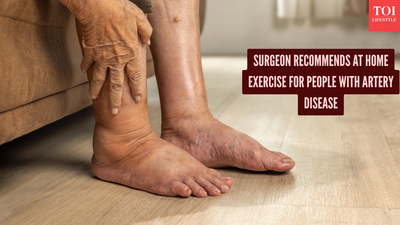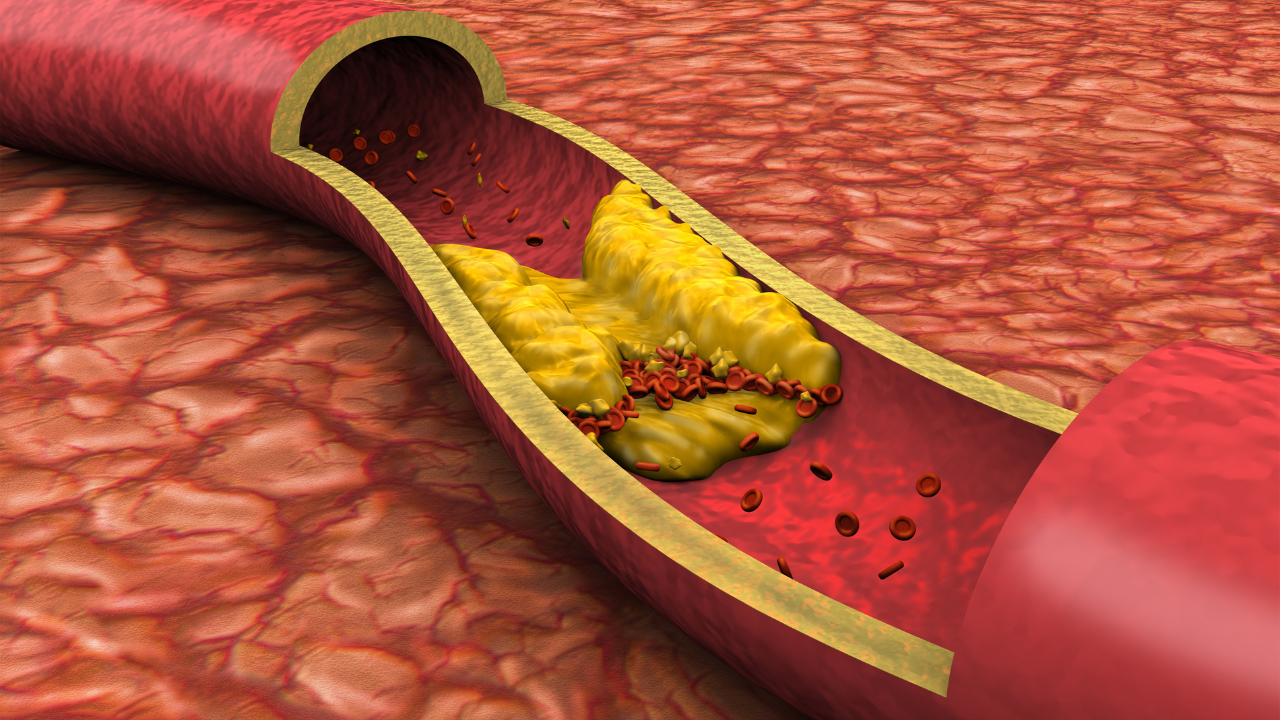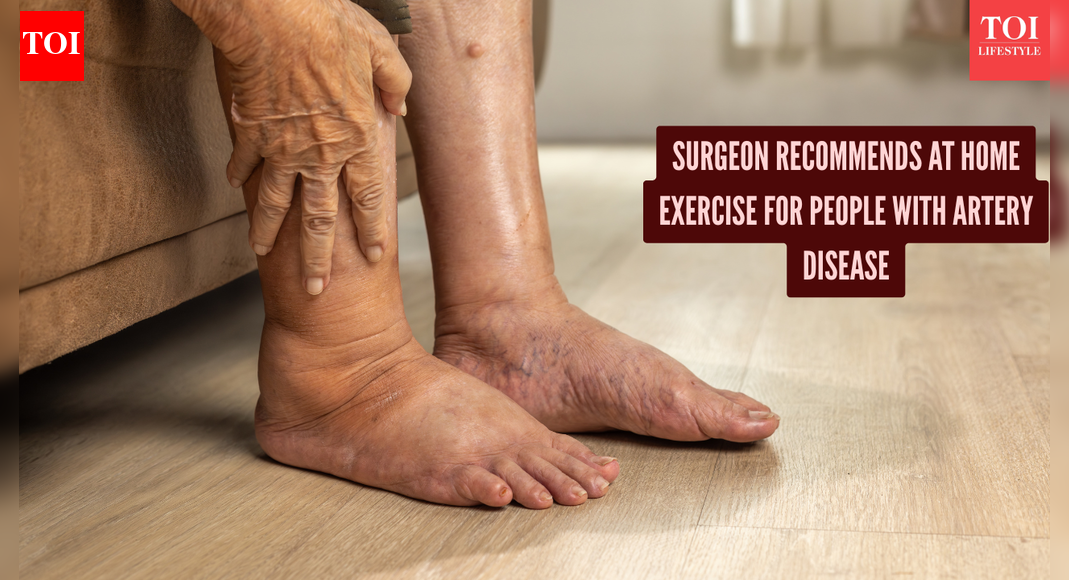 Peripheral artery disease, or PAD, affects millions worldwide and often leads to excruciating pain, difficulties in walking, and the risk of amputation of a limb in advanced stages. In one remarkable case of how simple lifestyle changes may make a big difference, an exercise recommended by a vascular surgeon helped a young patient with a blockage of critical leg arteries avoid amputation and walk independently. Dr. Sumit Kapadia, a vascular surgeon with 18 years of experience, encountered a patient at risk of leg amputation due to leg artery disease and this is what he recommended-Understanding the challenge of peripheral artery disease
Peripheral artery disease, or PAD, affects millions worldwide and often leads to excruciating pain, difficulties in walking, and the risk of amputation of a limb in advanced stages. In one remarkable case of how simple lifestyle changes may make a big difference, an exercise recommended by a vascular surgeon helped a young patient with a blockage of critical leg arteries avoid amputation and walk independently. Dr. Sumit Kapadia, a vascular surgeon with 18 years of experience, encountered a patient at risk of leg amputation due to leg artery disease and this is what he recommended-Understanding the challenge of peripheral artery disease PAD results from the narrowing or occlusion of the major arteries supplying the limbs due to atherosclerosis. As a result, during activity, the muscles become deprived of oxygen-rich blood, and symptoms include leg pain, cramps, weakness, and fatigue during even short walks. Severe PAD, if left untreated, leads to non-healing wounds and gangrene, which may require amputation. While medical treatments-and surgical options exist, conservative exercise-based methods remain a mainstay in the management and improvement of symptoms and quality of life.A careful, focused approach: Intermittent Walking-
PAD results from the narrowing or occlusion of the major arteries supplying the limbs due to atherosclerosis. As a result, during activity, the muscles become deprived of oxygen-rich blood, and symptoms include leg pain, cramps, weakness, and fatigue during even short walks. Severe PAD, if left untreated, leads to non-healing wounds and gangrene, which may require amputation. While medical treatments-and surgical options exist, conservative exercise-based methods remain a mainstay in the management and improvement of symptoms and quality of life.A careful, focused approach: Intermittent Walking-
Daily Walk Boosts Physical and Mental Health
Dr. Sumit Kapadia, a vascular surgeon, came across a patient whose legs became weak, painful, and exhausted after only a few steps. Despite ongoing medical care, several doctors had warned of the possibility of amputation. Instead of going for aggressive surgery, Dr. Kapadia recommended a structured program of intermittent walking-an approach gaining powerful clinical support as a way to relieve symptoms in PAD.Intermittent walking consists of walking briskly for a period of two to five minutes, followed by a short rest period, after which this cycle is repeated for as long as one hour per session, several times weekly. This method promotes the growth and dilation of collateral arteries-natural bypass vessels that develop over time to restore blood flow around blockages. By encouraging blood to move through such pathways, intermittent walking improves oxygen delivery to leg muscles and, over time, reduces pain during exercise.At first, progress was slow; the patient could barely make short intervals of walking. But with consistent adherence, his walking endurance increased week by week. The pain that once restricted even minimal movement began to subside. Within weeks-he was able to walk longer distances, climb stairs with reduced discomfort, and regain a degree of mobility previously lost. What at one time was a chore now became a part of daily life as his legs grew stronger, more energized.Why intermittent walking matters For patients with PAD-intermittent walking is not only exercise but also a therapeutic approach. Studies have identified that these walking programs significantly increase pain-free walking distance, reduce symptoms such as leg cramping and fatigue, and enhance functional capacity. Beyond its physical benefits, it empowers patients psychologically by restoring confidence and encouraging independence. Broader implications for the management of PAD The success with this patient’s case underscores how low-cost and accessible interventions can complement medical and surgical care. Although not a substitute for much-needed medical treatments, intermittent walking has been recommended in the guidelines for the management of PAD in many countries. It encourages natural collateral circulation, delaying the progress of the disease and minimizing the possibility of invasive procedures.Physicians and specialists are increasingly-highlighting education regarding walking programs, personalized exercise prescription, and regular follow-up. Patients also benefit from realizing even small, guided steps can translate into significant improvements.This case illustrates a strong message-that complex diseases often yield to simple and sustained actions. This intermittent walking epitomizes the use of the body’s own healing powers to better-outcomes without immediately resorting to surgery. All patients with atherosclerotic disease and pain in their legs should discuss these forms of exercise, tailored to their condition, with their healthcare provider. With patience, guidance, and commitment, many can find renewed strength in their legs, reduced pain, and hope for continued mobility, even amid circulatory challenges. Step by step, lives are saved—and futures restored.
For patients with PAD-intermittent walking is not only exercise but also a therapeutic approach. Studies have identified that these walking programs significantly increase pain-free walking distance, reduce symptoms such as leg cramping and fatigue, and enhance functional capacity. Beyond its physical benefits, it empowers patients psychologically by restoring confidence and encouraging independence. Broader implications for the management of PAD The success with this patient’s case underscores how low-cost and accessible interventions can complement medical and surgical care. Although not a substitute for much-needed medical treatments, intermittent walking has been recommended in the guidelines for the management of PAD in many countries. It encourages natural collateral circulation, delaying the progress of the disease and minimizing the possibility of invasive procedures.Physicians and specialists are increasingly-highlighting education regarding walking programs, personalized exercise prescription, and regular follow-up. Patients also benefit from realizing even small, guided steps can translate into significant improvements.This case illustrates a strong message-that complex diseases often yield to simple and sustained actions. This intermittent walking epitomizes the use of the body’s own healing powers to better-outcomes without immediately resorting to surgery. All patients with atherosclerotic disease and pain in their legs should discuss these forms of exercise, tailored to their condition, with their healthcare provider. With patience, guidance, and commitment, many can find renewed strength in their legs, reduced pain, and hope for continued mobility, even amid circulatory challenges. Step by step, lives are saved—and futures restored.

